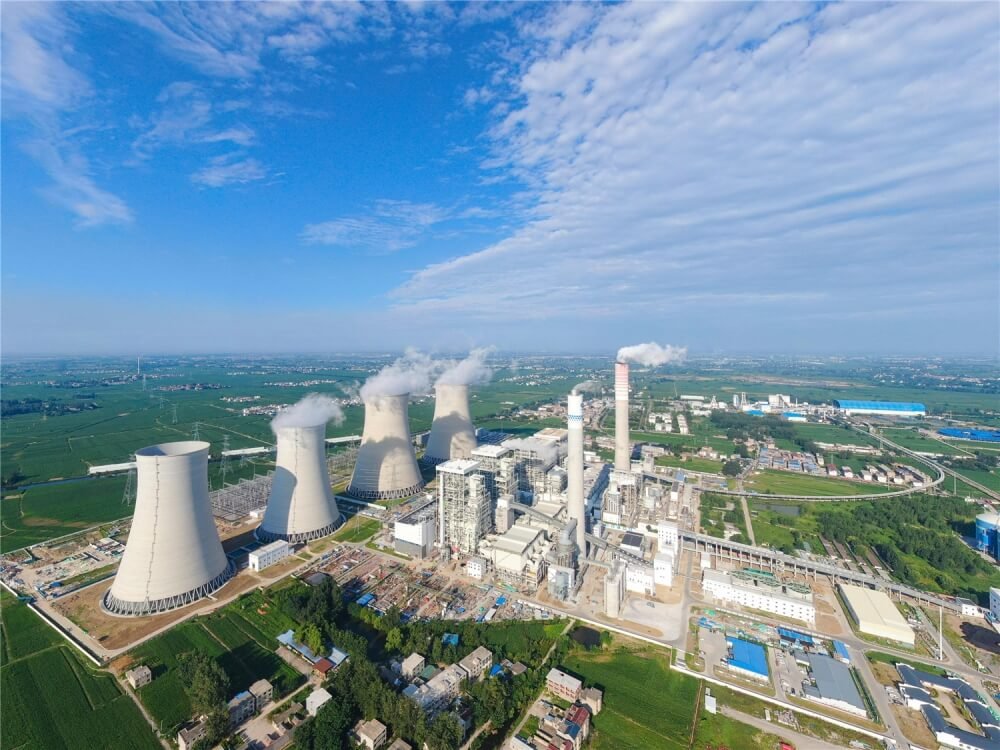
The thermal power plant is a facility designed not only for electricity generation but also for utilizing the residual heat from the power generation process to provide heating to users. The key functions and characteristics of such a plant are as follows:
Primary Functions
Electricity Generation: In a thermal power plant, electricity is produced by generating steam in a boiler, which is then directed into a steam turbine. The movement of the turbine drives the generator, resulting in the production of electrical energy.
Heat Provision: During electricity generation, the hot water that results from the condensation of steam in the turbine can be reheated and repurposed for heating or industrial applications. This process effectively recovers and utilizes the thermal energy generated.
Operational Principle
The operational principle of a thermal power plant involves several key steps:
Steam Production via Combustion: Within the boiler, fuel sources such as coal or natural gas are burned to generate steam at high temperatures and pressures.
Power Generation through Steam: This high-temperature, high-pressure steam is directed into a steam turbine, causing the turbine to rotate and, subsequently, driving the generator to produce electricity.
Steam Condensation and Recirculation: After powering the turbine, the steam is sent to a condenser, where it cools and condenses back into water. This water is then pumped back into the boiler by the feedwater pump to be reheated, creating a continuous cycle.
Application Areas
Thermal power plants are primarily utilized in various sectors, including industrial production, urban heating, and power system support. By employing cogeneration, these plants enhance energy efficiency while simultaneously reducing environmental pollution. This makes thermal power plants a vital approach to achieving efficient and clean energy utilization.
Thermal Economic Indicators
The thermal economic indicators of a thermal power plant are notably more complex than those of condensing power plants or heating boiler systems. This complexity arises because thermal power plants produce two distinct products—thermal energy and electrical energy—with varying forms and qualities.
To accurately assess the thermal economy of a thermal power plant, it is necessary to consider not only the overall thermal economic indicators but also the specific indicators related to the production of both heat and electricity. Key indicators include overall thermal efficiency, heat-to-electricity conversion ratio, power generation thermal efficiency, power generation heat consumption rate, power generation coal consumption rate, heating thermal efficiency, and heating coal consumption rate.
Challenges and Issues
The operation of a thermal power plant heavily depends on the boiler, which, in turn, relies on the air preheater. However, ash blockage and corrosion within the air preheater have long been persistent issues causing significant concern for power plants. Addressing these challenges has become a critical focus for the industry.
In response, BOKK TECH has developed innovative solutions, including rare earth alloy composite pipes and saw-vibration ash cleaning devices, which effectively mitigate corrosion and ash blockage at their source.
The rare earth alloy composite tubes feature double-layer protection and sacrificial anode techniques, resulting in a service life that is twice as long as that of enamel tubes under identical operating conditions. Additionally, the saw-vibration ash cleaning device enables continuous, contact-based mechanical cleaning without the need for shutdown, efficiently preventing air preheater blockages. This technology has earned widespread acclaim as an anti-corrosion and ash-removal solution in thermal power plants.
Share The Post
